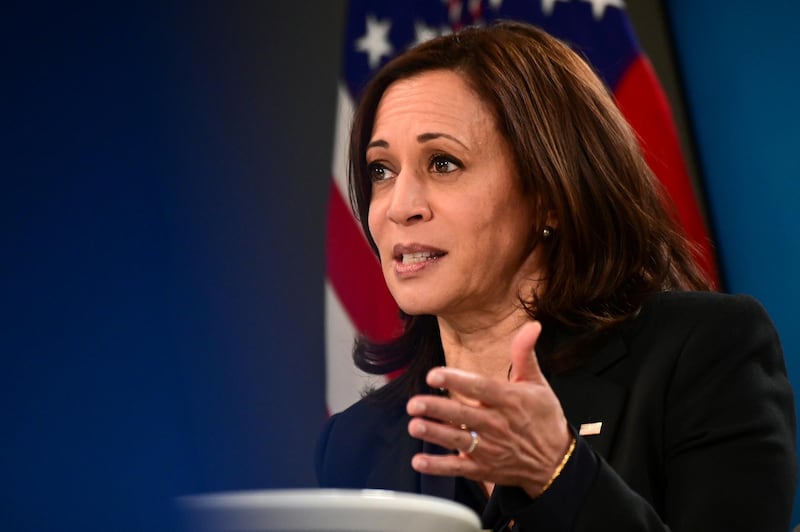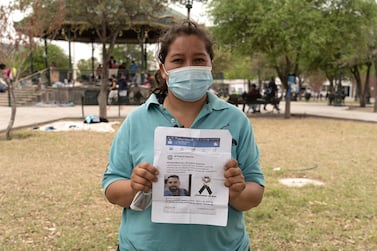US Vice President Kamala Harris on Sunday outlined her plan to stem the immigration flow from Central America’s Northern Triangle before her visit to the region planned for June.
“I come at this issue from the perspective that most people don’t want to leave home,” Ms Harris told CNN.
“They don’t want to leave their grandparents; they don’t want to leave the place where they grew up, where they speak the language, where they know the culture. That place is home.
“And when they do, it’s usually for one of two reasons. They’re fleeing some harm or they cannot stay and satisfy the basic necessities of life, such as feeding their children and having a roof over their head.”
Ms Harris said she hoped to increase domestic and international assistance to the three Northern Triangle countries – Guatemala, El Salvador and Honduras – to address the underlying causes of migration from the region through Mexico.
Vice President Kamala Harris on addressing the root causes of migration: "We have to give people some sense of hope that if they stay that help is on the way." #CNNSOTU https://t.co/dcOKYcUCX0 pic.twitter.com/pb2PPMxQLt
— State of the Union (@CNNSotu) April 25, 2021
She said she had brought together National Security Adviser Jake Sullivan, the commerce, agriculture and state departments, and the US Agency for International Development (USAID) as part of that response.
The Commerce Department will hold an online trade mission, while the Agriculture Department will focus on helping the drought-plagued region’s farmers and USAID offers disaster response assistance to hurricanes.
“Part of my approach is that we’ve got to institutionalise the work but also internationalise it,” Ms Harris said.
She said she was working with UN ambassador Linda Thomas-Greenfield to have US allies increase their contributions to the region.
“We have to give people some sense of hope that if they stay that help is on the way,” Ms Harris said.
The White House said on Wednesday that she planned to travel to the Northern Triangle region in June.
She said that the Covid-19 pandemic delayed the trip, prompting her to co-ordinate much of the response online so far.
Ms Harris is set to meet President Alejandro Giammattei of Guatemala online on Monday, and the country's civil leaders later in the week.
She will hold talks in May with President Andres Manuel Lopez Obrador of Mexico.
Tens of thousands of migrants from the Northern Triangle remain on the Mexican side of the US-Mexico border, many of whom are seeking asylum through the overwhelmed and slow US immigration court system.
Republicans have blamed President Joe Biden for the surge of migrants at the border, saying it was caused by his rescinding some of former president Donald Trump's hardline immigration policies.
But the Biden administration has also come under pressure from parts of the Democratic base for keeping many of those policies in place, such as the detention of unaccompanied minors in child detention facilities.
Mr Biden chose Ms Harris in March to lead his administration's response to the immigration crisis.
While a daunting task, the accompanying diplomatic experience could give Ms Harris room to develop her foreign policy credentials before a future presidential run.
“Joe Biden as vice president was asked by President [Barack Obama] to focus on the Northern Triangle, and he asked me to do and carry on the work that he did,” Ms Harris said.
“We’re making progress but it’s not going to evidence itself overnight. It will not but it will be worth it.
“Part of the problem is that under the previous administration, they pulled out essentially a lot of what had been the continuum of work and it essentially came to a standstill.”








